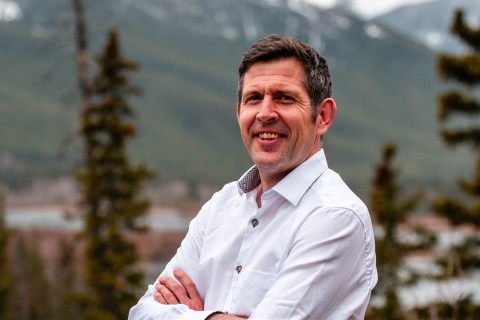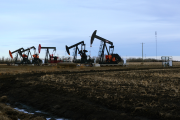It's been more than two months now that oil from BP's blown out Deepwater Horizon rig has been gushing into the Gulf of Mexico. A man-made disaster of epic proportions, some people are now claiming that it makes Alberta's landlocked oilsands look safe in comparison. In fact, that statement couldn't be further from the truth.
The reality is both offshore drilling and oilsands development present significant risks. And with easily accessible conventional oil running out, any further oil production will come with considerable environmental impacts. It takes a lot of energy to turn the oilsands, a sticky mixture of sand, water, clay and bitumen, into fuel for our vehicles. And one of the by-products of the energy-extraction process is a liquid toxic waste called tailings. It was tailings - which are currently stored in large ponds occupying 170 square km, an area larger than the city of Vancouver, B.C, - that caused the death of 1,606 ducks two years ago. (Editor's note: Syncrude was convicted in the deaths of the ducks on Friday, June 25, 2010)
Operators fail to comply with regulations
Recently, the Alberta Energy Resource and Conservation Board implemented Directive 074, aimed at reducing liquid tailings. But seven out of nine oilsands operators have said they have no plans to comply with the regulations. These are unfortunate decisions because a breach of one of the tailings pond walls (dykes) into the Athabasca River would be an ecological disaster. It's true. Dr. David Schindler, a highly respected water scientist, has said a breach would make the world "forever forget about the Exxon Valdez."
A 2009 Environmental Defense analysis concluded that tailings ponds could already be leaking at a rate of 11 million litres per day and could more than double if current proposed projects proceed. This poses long-term risks to communities downstream.
But the water supply isn't only under threat from tailings. Ungluing bitumen from the oilsands requires a lot of water - it takes two barrels of water to produce one barrel of bitumen. No matter how commendable current industry water recycling practices are, large withdrawals from the Athabasca River will still be required and current recycling process doesn't return any of the water used back to the river.
Further, industry continues to resist calls to halt withdrawals during low flow periods, when the fish and the river ecosystem are already stressed.
It's clear that oil and water don't mix, so what about the air? The oilsands, Canada's fastest growing source of greenhouse gas emissions, are responsible for Alberta's emissions growing by 43 per cent between 1990 and 2008, compared to a 24-per-cent increase for Canada as a whole.
Reasons for black eye for Canada
Those statistics - and the fact that extracting and upgrading oilsands is estimated to be three to 4.5 times as intensive per barrel as conventional crude production - are the reasons that the development of Alberta's oilsands resulted in a black eye for Canada during last December's Copenhagen climate talks. And, unfortunately, Canada still doesn't have regulations to reduce greenhouse gases.
But the oilsands also take a toll on the land. The Alberta government has only certified as reclaimed 1.04 square km of the 600 square km of land disturbed by oilsands mining operations. And as calculations as to the financial securities that will be needed to cover the cost of reclamation are not publicly available and are inadequate, Albertans and Canadians are at risk of bearing the liability of costly clean up in the future.
Not exactly comforting, especially in light of the fact that, as of June 2009, about 60 per cent of the total oilsands area has been leased to companies for oilsands drilling and mining. That's an area almost three times the size of Vancouver Island leased by the Alberta government prior to land-use planning and without environmental assessment.
It is not surprising then that I find painting the oilsands green in the wake of the Gulf oil spill not to be an appropriate response.
Let's be honest with ourselves
As US President Barack Obama said recently: "If we're honest with ourselves, we must also recognize that the days of cheap and easily accessible oil are numbered and the costs and risks associated with our addiction to fossil fuels aren't going away. The tragedy unfolding on our coast is the most painful and powerful reminder yet that the time to embrace a clean-energy future is now."
The oilsands are simply not the answer to our addiction to oil and their impacts cannot be dismissed, even when compared to the Gulf spill. What's needed now is a firm commitment to transition off oil, paving the way to cleaner energy solutions.






